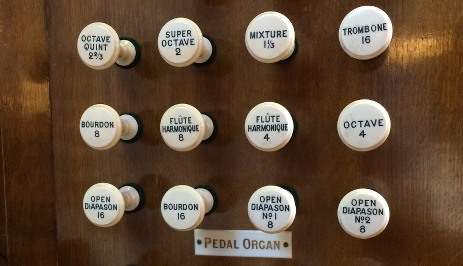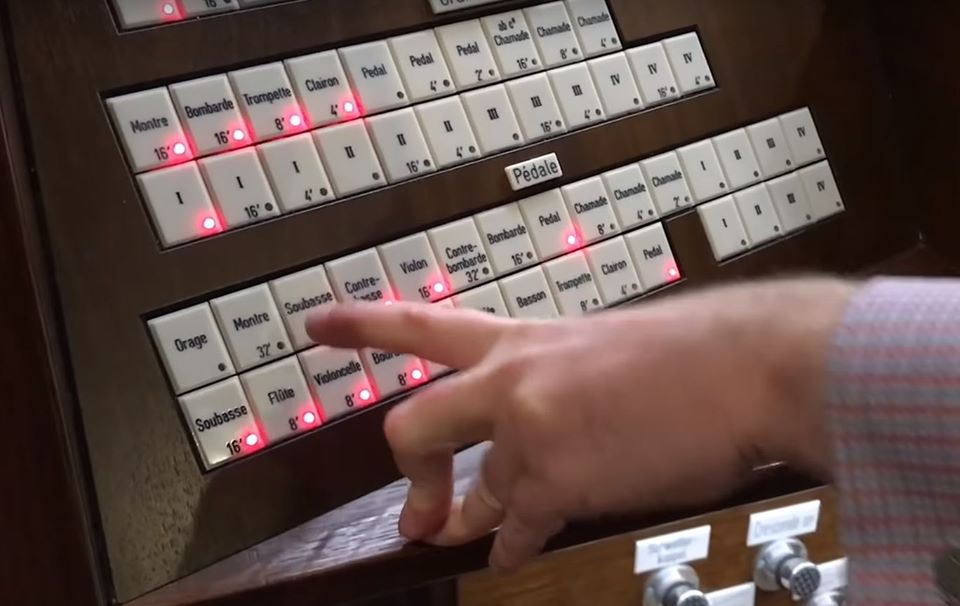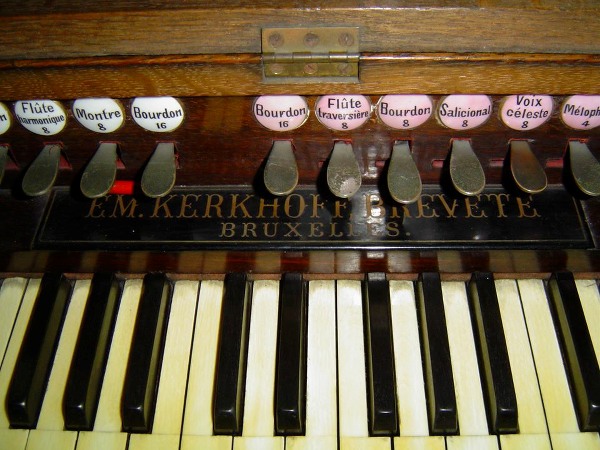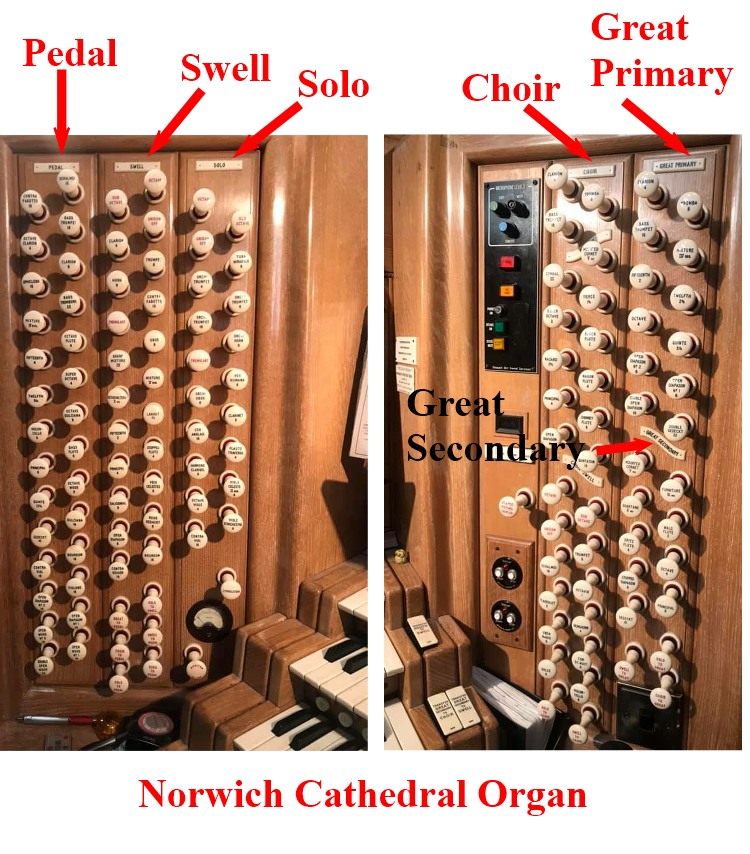These
stops can be either
drawstops, which have to be pulled out to activate the pipes, and pushed in to silence them, and they will look something like this;

They may however, be
tab stops, and these need to be flicked on. Most are off when up, and on, or selected, when pushed down, and they will look something like this:

Occasionally, the stops are rocking tabs, or simple on/off button, which illuminate when active.
Here is an example:

That is great (no pun intended) until their bulb fails, so you have to pay more attention to their position, as a cursory glance might mislead you.
You may come across very unusual looking stops, which could initially throw you, like this, for example:

They look like drawstops, but the actual rockers appear at first glance, to be another keyboard.
This organ was made by Jean-Emile Kerkoff in 1906.
Don’t worry about the
fancy names given to any of the stops.
The important thing is that they each have a
number which tells you the
length of the longest pipe, so you know which ones sound at concert pitch and which ones at other pitches.
The stops which apply to any one manual are always grouped together and, unless you are very unlucky, are always labelled, with the name of the manual. This name will generally be above that group of stops.
So look for Great or Swell.
Here is a picture of Norwich Cathedral's organ:

Please let us know if you have the opportunity to play this 4 manual organ.
If there is no labelling, which is very rare then it is vital to test the organ beforehand and hope your memory is functioning well. Post it notes that you can write on and stick in appropriate places will be a great (another pun) help.
In the next Reply, we look at
couplersPeter